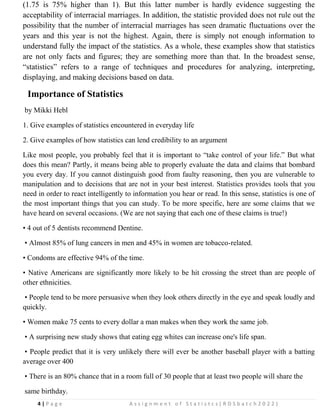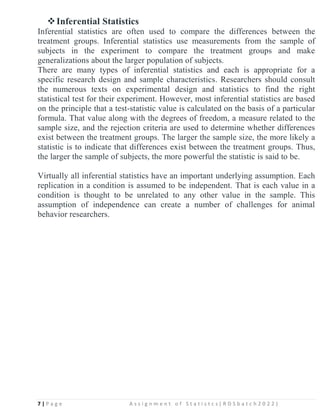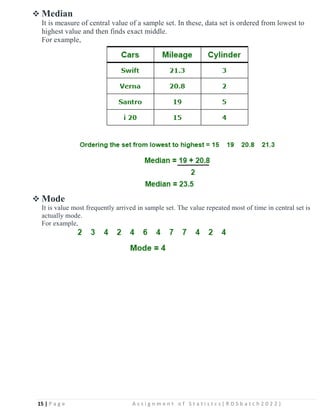This document provides an introduction to statistics. It discusses descriptive statistics, which summarize and describe data, versus inferential statistics, which make generalizations about a population based on a sample. Descriptive statistics include measures like percentages, averages, and tables to characterize data. Inferential statistics are used to compare treatment groups and determine whether observed differences could occur by chance or are likely due to the treatments. The document provides examples of statistics encountered in various fields and emphasizes the importance of understanding statistics to evaluate claims critically.

















